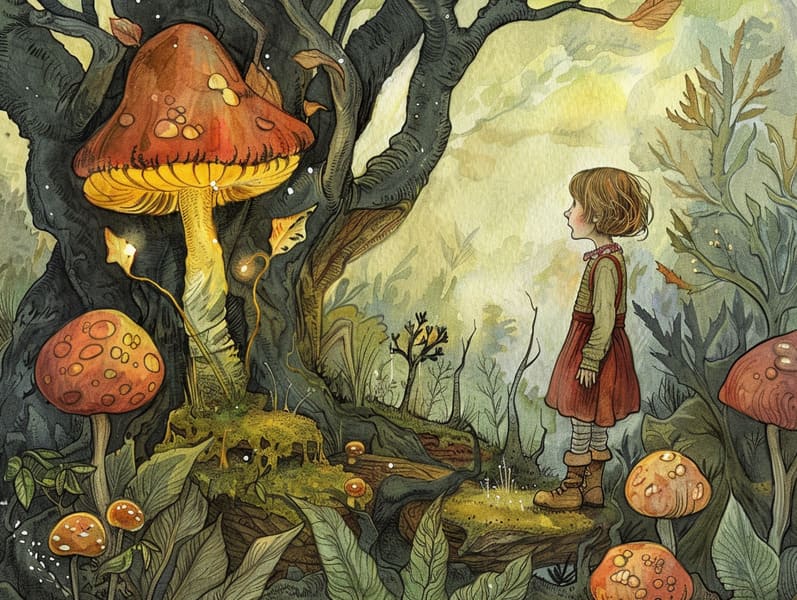
Historical fairy tales have long histories. These stories have been relayed from one generation to the next far before they were ever published. They sprang from a variety of traditions, including Western traditions. They were initially conveyed among mature audiences, often carrying themes and messages relevant to the societal norms and beliefs of the time.
The famous Grimm duo, Jacob and Wilhelm, were among the first to compile and publish many of these beloved narratives. Their collection, "Grimm's Folk Tales," included tales like "The Story of Cinderella," "The Bread Crumb Trail," and "Little Snow White," which have since become staples in the world of beloved fairy tales. Similarly, H. C. Andersen's fanciful fairy tales, such as "The Mermaid," and "The Story of the Ugly Duckling," have stolen hearts worldwide, establishing their place in the pantheon of beloved fairy tales.
Though they are old, fairy tales remain as applicable as ever, especially as kids' bedtime tales. These whimsical stories are now available in numerous formats, including beautifully illustrated books, captivating animations, and free fairy tales online.
Their lasting appeal can be attributed to several fascinating points:
Crucial Morals: Old fairy tales often provide important moral lessons. Stories like "The Boy Who Cried Wolf" teach the benefit of truthfulness, while "The Tortoise and the Hare" illustrate the virtues of steadfastness and modesty. These tales offer children clear distinctions between truth and falsehood, building their moral compass in a subtle yet meaningful way.
Warmth and Understanding: Old fairy tales frequently showcase figures facing trials and tribulations, urging listeners to comprehend with their struggles and applaud their triumphs. For instance, "The Tale of Beauty and the Beast" shows us the significance of valuing inner qualities to acknowledge the real character of a character, developing insight and knowledge.
Cultural Recognition: Many traditional fairy tales are rooted in the cultural contexts from which they developed. Immersing in these tales can provide fascinating glimpses into different beliefs, building a sense of world understanding and discernment.
Fantasy and Innovation: The magical elements in ancient fairy tales—magical beings—ignite children’s creativity. These stories lead readers to otherworldly realms, unleashing inventive dreams and a sense of marvel that persists a lifetime.
Classic fairy tales are not only fascinating but also didactic. They serve as bewitching tools in enhancing various intellectual and emotional capacities in kids. When classic fairy tales are read aloud, they boost speaking abilities by bringing new words and elaborate sentence structures. This practice also boosts listening skills and attention span, as the young remain attentive, enthusiastic to see what happens next.
Furthermore, conversing about the themes and characters of old fairy tales can enhance thought processes and thought processes. Children are taught to identify patterns, expect results, and realize cause and effect. These analyses also ease the young articulate their thoughts and feelings, contributing to their emotional intelligence.
In today’s modern era, the abundance of digital storybooks has made these tales more accessible than ever. Internet sites and mobile apps present large libraries of timeless fairy tales that can be read or played anytime, anywhere. Fairy tales told out loud are particularly liked, making available an engaging way for children to take part in these whimsical stories. Voice books and read-aloud videos carry characters and settings to life, often supported by bewitching soundtracks and background music that amplify the narrative adventure.
The timeless appeal of classic fairy tales lies in their ability to alter to modern society while holding onto their central values. Contemporary retellings of these fairy tales often include more multicultural characters and modern settings, making them accessible to today’s audience. However, the underlying themes of fortitude, warmth, and integrity remain unchanged, continuing to influence readers of all ages.
Old fairy tales also offer a sense of coziness and homeliness. They impart a structured narrative with a plain beginning, middle, and end, often wrapping up with the culmination of conflicts and the triumph of morality over wickedness. This foreseeability can be consoling for young ones, gifting a sense of dependability in an always shifting world.
Traditional fairy tales continue to mesmerize and guide new generations, maintaining their attraction and value in modern society. As children's night stories, they feature a perfect blend of charm and enlightenment, furthering moral values, empathy, and creativity. The abundance of digital storybooks and the well-received status of fairy tales told out loud validate that these classic narratives remain available to new generations.
By upholding and relating these stories, we continue to commemorate the rich tapestry of tales here and cultural heritage. Whether you are discovering a beautifully illustrated book, exploring a cyber library, or listening on an narrated book, the wonder of timeless fairy tales is always within reach. These fairy tales reveal of the persistent strength of storytelling and its ability to gather us across epochs and places.
Regardless if you are experiencing a artistically illustrated book, experiencing a cyber collection, or listening through an sound book, the delight of bedtime fairy tales is always within reach.
These tales point out of the unchanging spell of narratives and its ability to bind us across epochs and places, creating a bond that captivates and teaches alike.